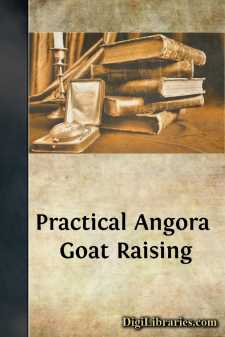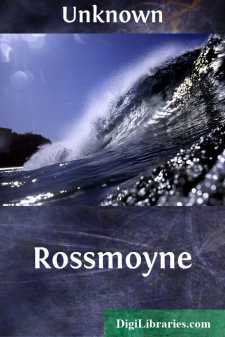Categories
- Antiques & Collectibles 13
- Architecture 36
- Art 48
- Bibles 22
- Biography & Autobiography 813
- Body, Mind & Spirit 142
- Business & Economics 28
- Children's Books 16
- Children's Fiction 13
- Computers 4
- Cooking 94
- Crafts & Hobbies 4
- Drama 346
- Education 46
- Family & Relationships 57
- Fiction 11829
- Games 19
- Gardening 17
- Health & Fitness 34
- History 1377
- House & Home 1
- Humor 147
- Juvenile Fiction 1873
- Juvenile Nonfiction 202
- Language Arts & Disciplines 88
- Law 16
- Literary Collections 686
- Literary Criticism 179
- Mathematics 13
- Medical 41
- Music 40
- Nature 179
- Non-Classifiable 1768
- Performing Arts 7
- Periodicals 1453
- Philosophy 64
- Photography 2
- Poetry 896
- Political Science 203
- Psychology 42
- Reference 154
- Religion 513
- Science 126
- Self-Help 84
- Social Science 81
- Sports & Recreation 34
- Study Aids 3
- Technology & Engineering 59
- Transportation 23
- Travel 463
- True Crime 29
Practical Angora Goat Raising
by: Unknown
Description:
Excerpt
PREFACE.
For several years beginners in the Angora goat industry were without text books, and even to-day there are very few practical treatises. From our forty years of experience in farming Angoras, and from the personal observations of our Dr. W. C. Bailey, while in the interior of Asia Minor, we have tried to select the essential points in the successful management of Angora flocks, and to present these points so that they may be used.
We have given a brief outline of the history of the Angora goat, but we have devoted several pages to consideration of detail in breeding and kidding. It has been our aim to make this a practical text book for the beginner in the Angora industry, and if it proves of value to him, it has fulfilled its mission.
The Authors.
s to the origin and early history of the Angora goat little is known. It is supposed that the Angora variety descended from one of the classes of wild goats, and different writers have contended that different genera were the foundation of the Angora species. They have based these claims upon the characteristics of the horns, the covering of the body, shape and size of the animal, and various other details. Several agree that Capra Ægagrus is the class of goat from which the Angora species has developed.
KNOWN FACTS.
Present history traces the Angora goat to the vilayet of Angora, in Asia Minor, and to the country immediately surrounding this vilayet. Some have set a date over two thousand years ago, claiming that the Angora goat was introduced into Asia Minor at that time, but the only authentic history is that given by Tournefort, a French naturalist, employed by his government, who explored Asia Minor about two hundred and fifty years ago, and who described and pictured the Angora goat about as he appears to-day and by Evliya Effendi, a Turk, who wrote in 1550 of the goats, and by a few other writers. That they have not changed more is due to the fact that the Turk is quite content as he is, and he has no ambition to breed a different goat from what he has had for at least the past three centuries.
Before we consider the migrations of the Angora goat, we will investigate the physical conditions of their native province. The interior of Asia Minor, or the Angora goat country, is from one to four thousand feet above the sea level. Low, rolling hills and broad plains, treeless and almost waterless; dry, hot and desolate in the summer, and covered with more or less snow in the winter, form the habitat of the Angora. A small fine fibered sage brush is the principal diet of the goat, both summer and winter, but in the spring this diet is supplemented with weeds and some grass, and in the summer some of the goats are driven to the higher mountains, where there are some scrub pines and other varieties of brush. There is no winter feeding. The goats make their own living on the tops of the sage brush, which protrude through the snow.
The indolent Turks do make some provision for the shelter of themselves and the goats in the winter....




![The Golden Mean or Ratio[(1+sqrt(5))/2]](https://digilibraries-com.s3.eu-central-1.amazonaws.com/covers/762d190f-63a4-489a-b897-ff78516bd105.jpg)







